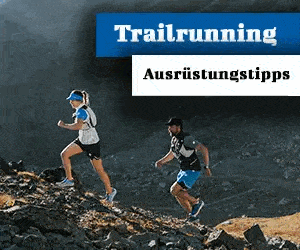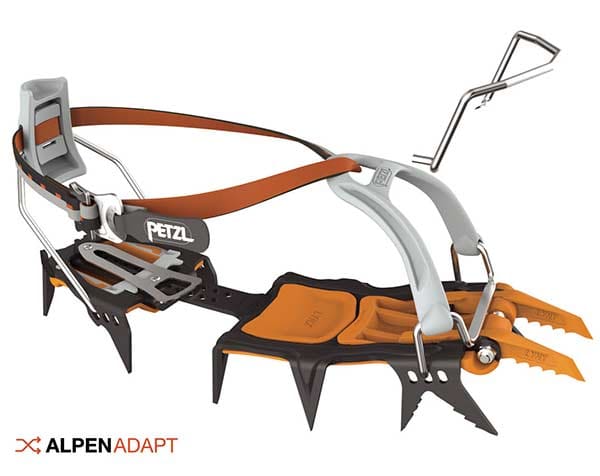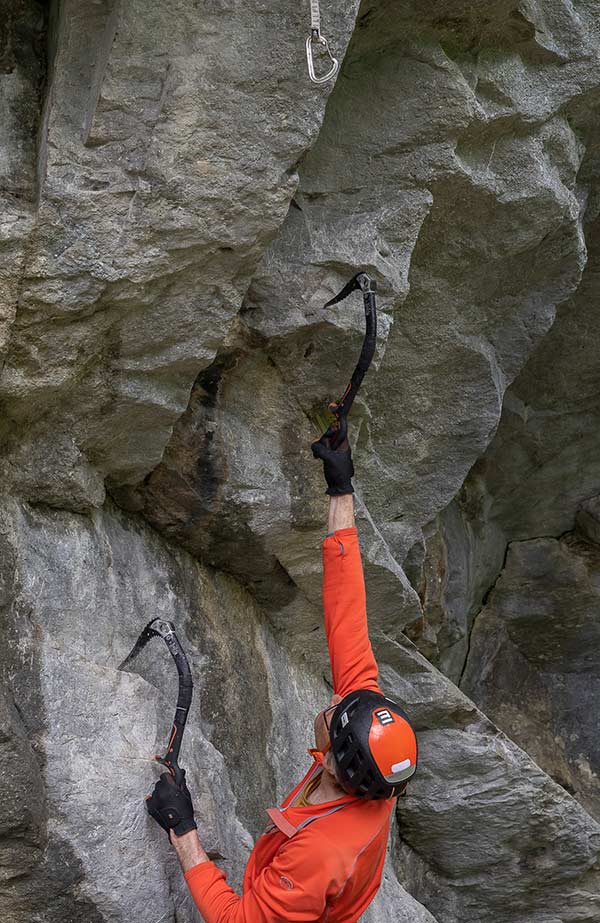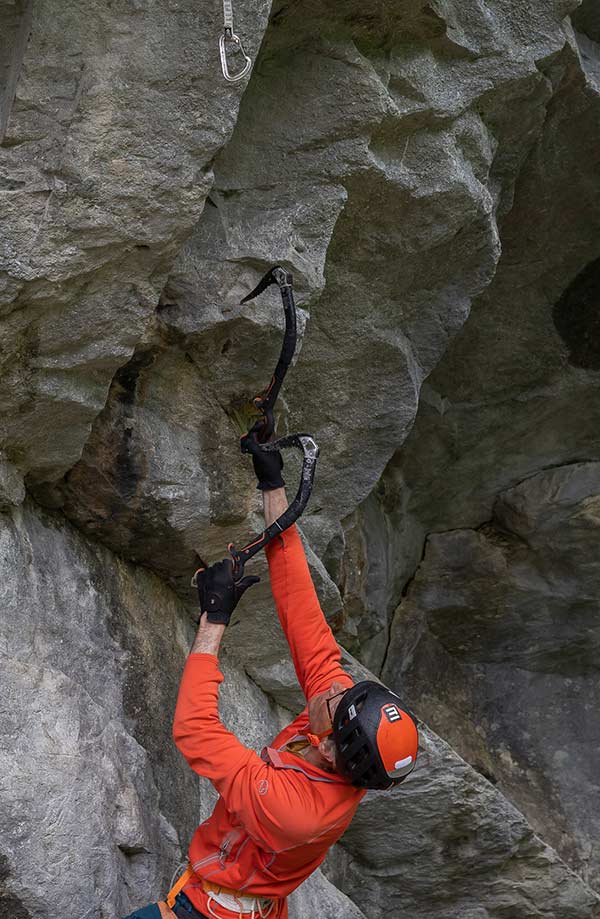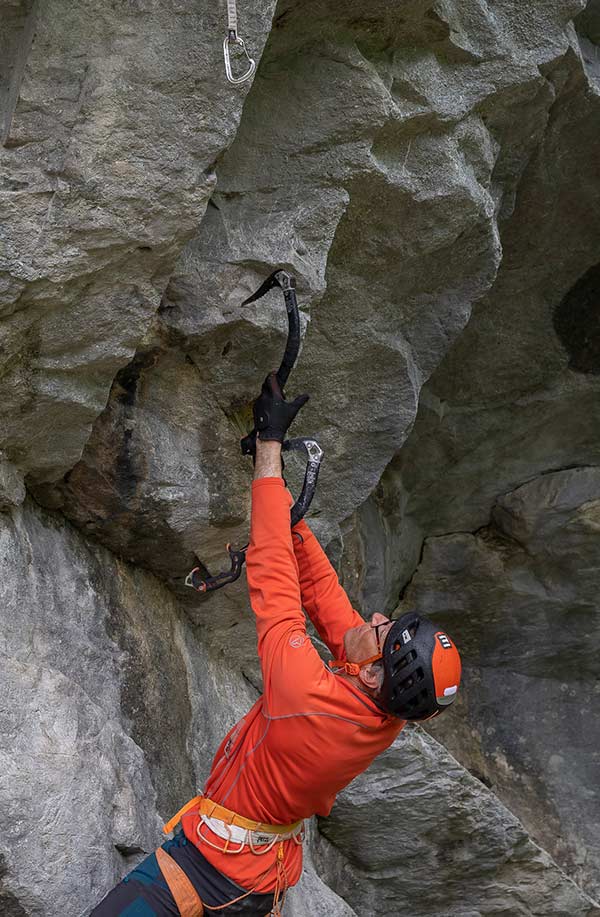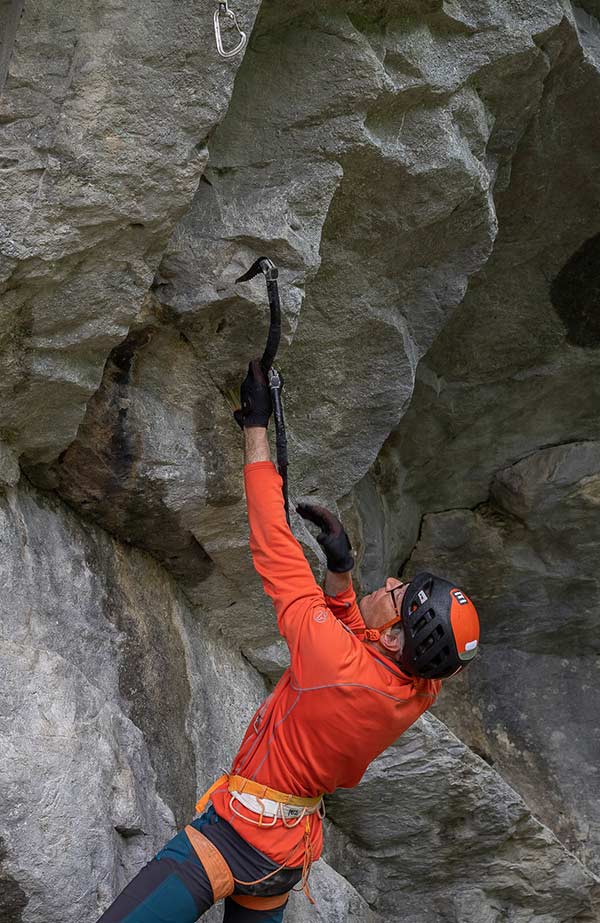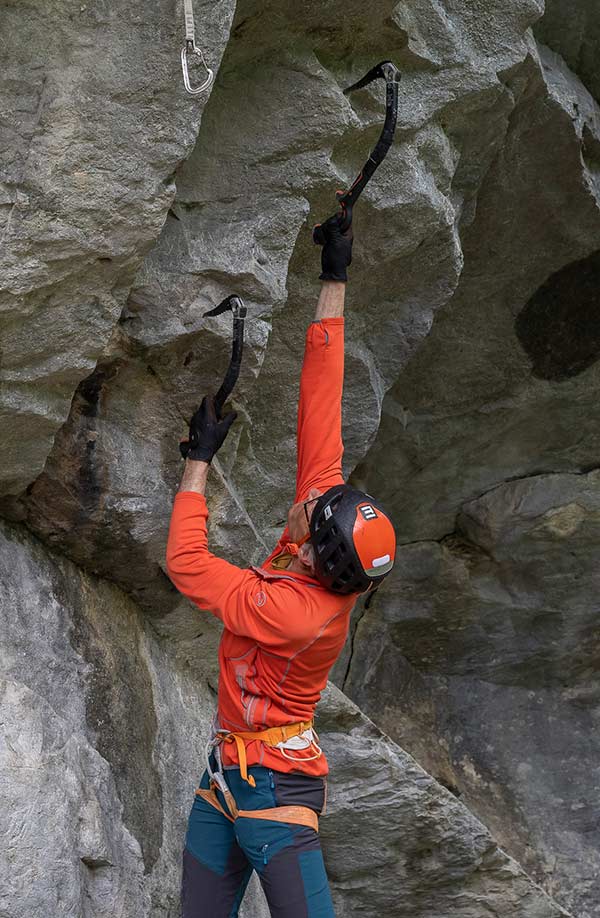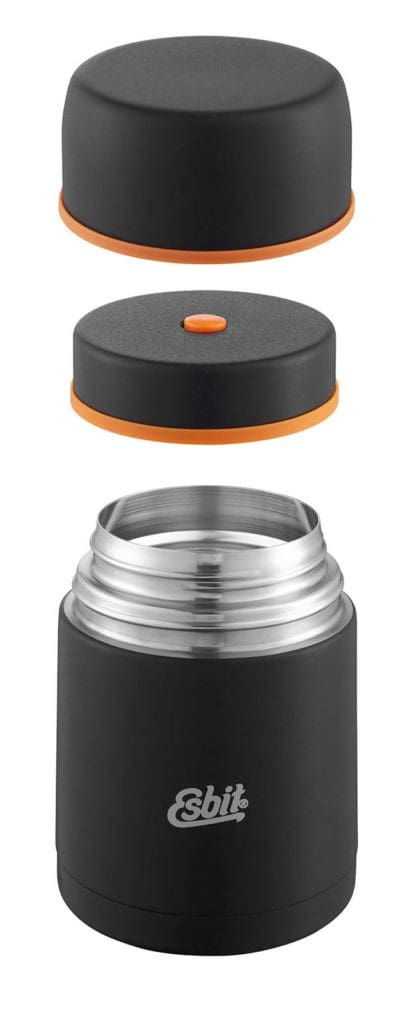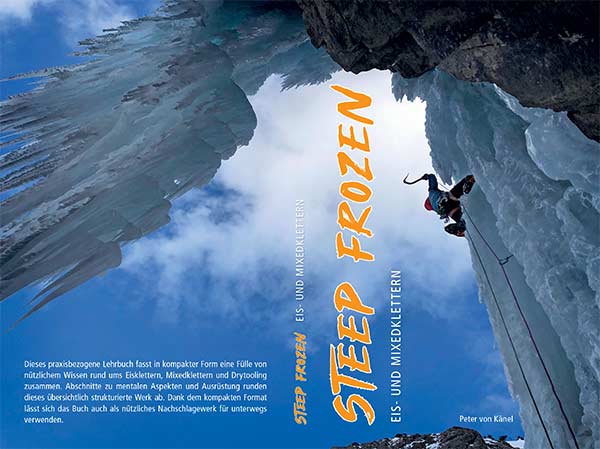Dry tooling is a highly effective strength and technique training for difficult ice and mixed climbing. Alpinists who want to be better and safer in mixed, alpine terrain also benefit enormously. More and more people practice dry tooling as an independent sport. This article provides a compact insight into the basics of this fascinating discipline.
A contribution by Peter von Känel - presented by Petzl, Bächli Bergsport and Esbit
You will learn that in this article
- The benefits of dry tooling
- Basic movement
- Change grip on the same ice tool
- More tips about dry tooling
- Safety
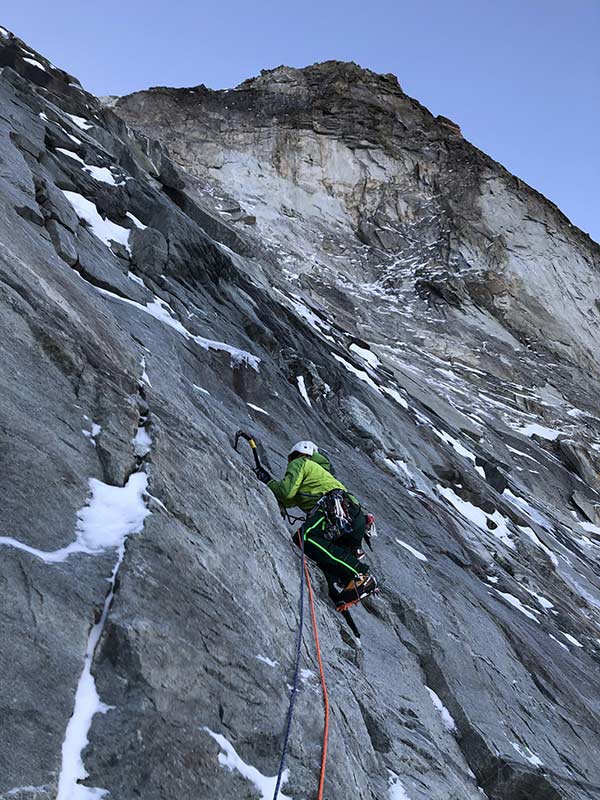
The benefits of dry tooling
With dry tooling you can climb many rock passages that would be very difficult or even impossible to master in classic free climbing. In particular, fine cracks, holes and small, positive edges offer ideal placements for the tips of the picks and the front points of the crampons.
«Dry tooling also opens up new possibilities in alpine terrain.»
Peter von Kaenel
This climbing technique also opens up new possibilities in alpine terrain, as demonstrated by Silvan Schüpbach and Peter von Känel when they climbed the Douves Blanches north face in November 2022 (Lacrux reported).
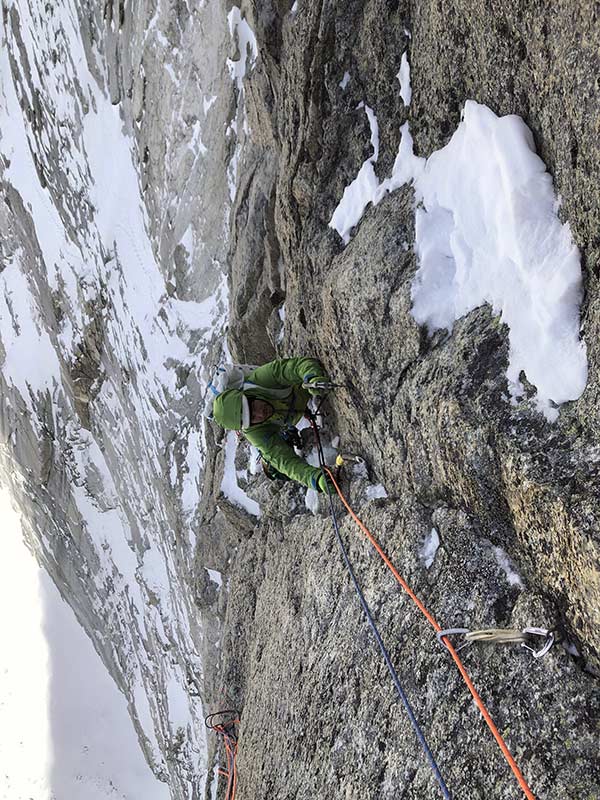
Dry tooling as a separate discipline is independent of weather, temperature and ice conditions and can be practiced all year round. It is a very versatile discipline and different techniques are used depending on the steepness and the nature of the rock. This article introduces some basic techniques.
Basic movement
In terms of climbing technique, dry tooling is more diverse than ice climbing. The following sequence of movements represents a solid basis on which to build and further refine your dry tooling technique.
"The thrust for locomotion comes from the legs (push open) and from the trunk (turn in)."
Peter von Kaenel
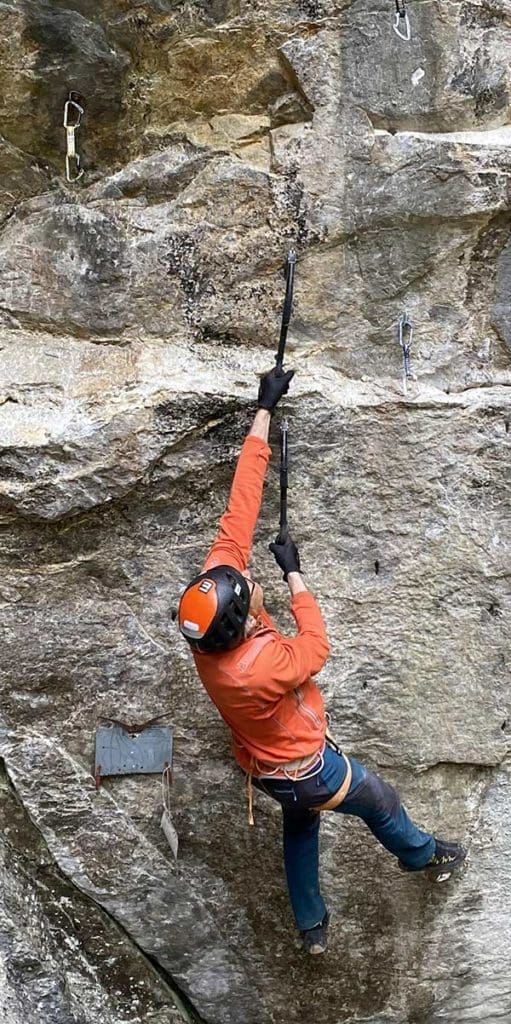
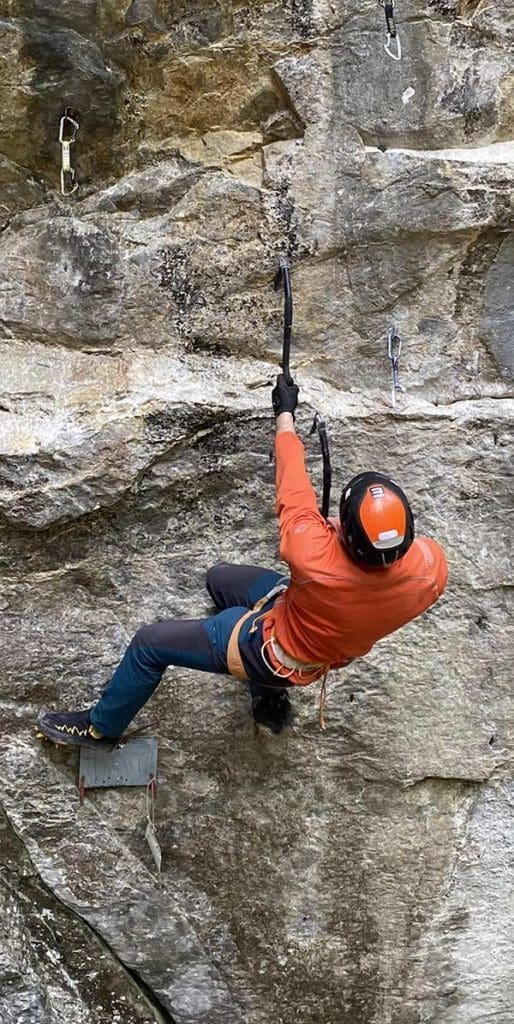
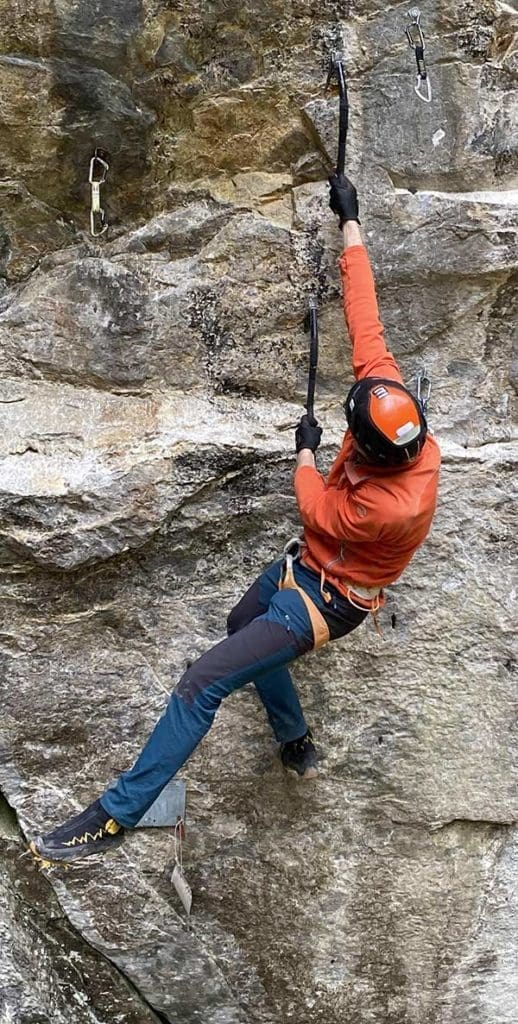
Picture a
You plan your next move from a position that is as comfortable and stable as possible. The planning includes the next hook and the placements for the crampons. Fine cracks and holes in the rock are particularly suitable as hooks. You play through the climbing move in your head.
Picture B.
With the body's center of gravity remaining low, you place your crampons precisely. If the terrain is very overhanging, place only the crampon opposite the arm holding you. The other leg is used for balancing or pushing.
Now trigger the movement by straightening the leg and turning the hip opposite the holding arm against the wall. As much of the thrust as possible comes from the leg and trunk, and the supporting arm is bent as little as necessary.
Picture c
The ice ax is placed in the new hook and tested. The test includes the allowable angles in all three degrees of freedom, as well as the strength of the hook. This is tested with a short, strong pull. You then resume a position that is as comfortable and stable as possible, in which the upper arm is ideally stretched, recover and plan the next move.
Petzl Lynx – The modular crampon
The Lynx is a modular crampon for ice and mixed climbing, which has a universal binding system that can be adapted to all mountain boots with rear soles as required.
The front points can be positioned as double or mono points, long, short or asymmetrical. Whether for dry tooling, large ice walls or shorter snow couloirs - the Lynx can be adapted to any terrain and a wide variety of tours.
The magic word here is Petzl Alpen Adapt. This modular system for ice axes and crampons makes it possible to easily swap out the various components and adapt them to personal needs and activities.
Change grip on the same ice tool
In contrast to ice climbing, dry tooling often involves changing hands on the same ice tool. With your free hand you grab the upper handle of the ice ax you have already placed – you hold the ice ax “briefly” and thus gain around 10 cm additional height.
Even when recovering from a good hook, you'll often find yourself using the same ice tool to shake your arms out several times. The change of grip should be as efficient and energy-saving as possible. The method presented below works best in most situations, but it takes some practice.
The free ice ax is placed on the thumb base joint of the holding hand - see series of pictures. Since you always hold the free ice tool, it can hardly fall down.
There are other methods as well. You often see climbers sling their ice tools over their shoulders. With this technique you have to be careful not to drop the ice tool, especially if the climb is very overhanging. There is also an increased risk of injury when bouldering.
Warmth in icy environment: Thermal container from Esbit
Whether still during the tour at the belay station or at the foot of the route: when the body calls for new energy, a hot meal is just what you need.
Perfect if you have already prepared them at home and taken them with you in the double-walled stainless steel thermal container.
Esbit's food jugs keep food warm or cold for up to 24 hours, although the latter property is probably less important when ice climbing.
The wide opening allows easy filling and cleaning. The closure is absolutely tight and has a pressure release button. The lid can also be used as a bowl if required.
In addition to thermal containers, the Sculptor range also includes vacuum flasks, thermal mugs and drinking bottles.
More tips about dry tooling
With very long moves, you can press the holding hand against your chest and block it. In combination with turning in, you can gain another few centimeters of range when crossing.
Even if you change your grip to "short", you gain another approx. 10 cm range. The thrust for locomotion comes from the legs (push up) and trunk (twist in). The arms remain stretched as much as possible. The kicks should ideally be chosen in such a way that the legs are practically stretched out when you reach the next hook.
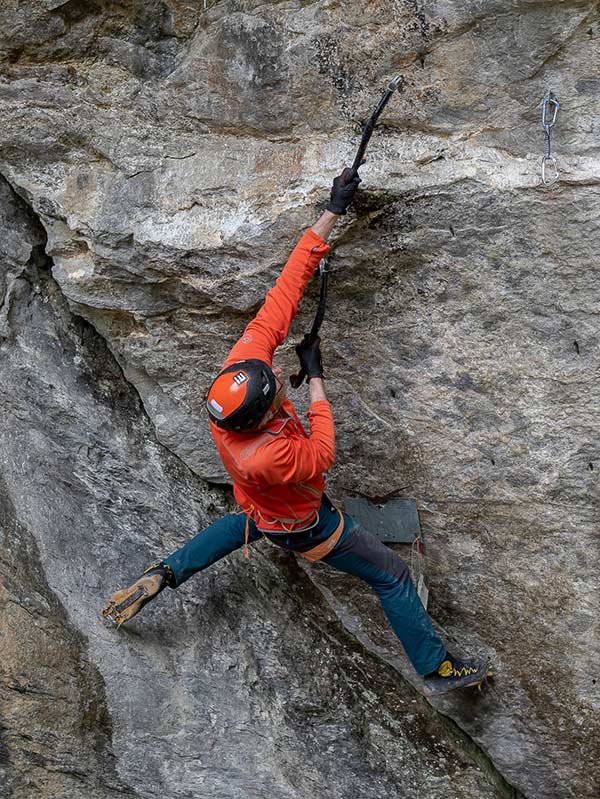
It's often most efficient to make long moves from good (tested) hooks. By aiming for the next hook and setting the crampons on the stretched arm, you try to keep the phase of pulling with the upper arm as short as possible.
"While the expert uses the upper arm briefly, purposefully and intensively when necessary, the upper arm of the beginner is usually constantly tense."
Peter von Kaenel
When climbing difficult routes, you often spend a large part of the entire climbing time in resting positions. There you breathe deeply into your stomach and hold on to an ice ax with only one hand as loosely as possible, shake out your free arm and, if necessary, grasp it several times.
At the moment you start climbing, you temporarily consciously switch from relaxation mode to performance mode: You climb resolutely, precisely and quickly to the next resting position.
Safety when dry tooling
As with ice climbing, gloves and a helmet are also part of the basic equipment for dry tooling. Hand straps pose a high risk of injury and should therefore not be used.
On alpine routes, where losing an ice ax has serious consequences, the ice ax can be attached to the rope ring of the climbing harness using a leash.
"When you're doing gymnastics in the Drytool climbing garden, the leash is a nuisance and increases the risk of injury."
Peter von Kaenel
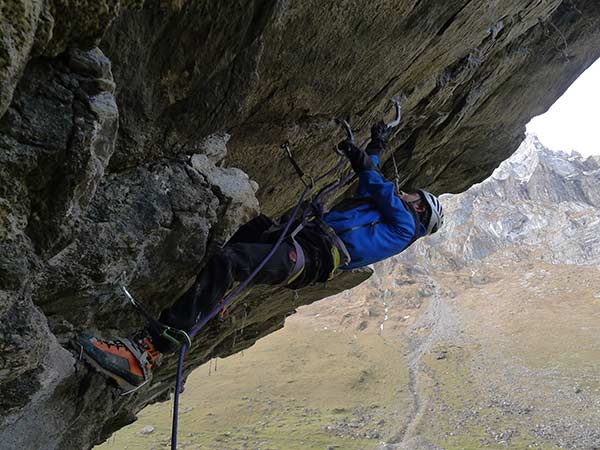
Another point concerns heavily overhanging routes: Depending on the terrain, there is a risk of a fall on the ground in the area of the first two to three intermediate belays. The belayer needs to be extra vigilant at this stage.
At best, it makes sense to make the first intermediate backups. Especially with steep dry tooling with dynamic pulls, large forces often act on the musculoskeletal system. A good warm-up before climbing will help prevent injury.
To the author
Peter von Känel, born in 1973, is a mountain guide, aviation engineer and passionate climber. For many years, Peter has been intensively involved not only with ice and mixed climbing, but also with the human factor.
In addition to some sensational ice and mixed first ascents such as the BASE route in the Lauterbrunnen Valley, Peter has repeated many extremely demanding routes, sometimes as a mountain guide.
With these tours, as well as in many discussions with experienced climbing colleagues, Peter has acquired a wealth of knowledge about ice and mixed climbing over the years. He passes on this knowledge in courses, coaching and with his new textbook.
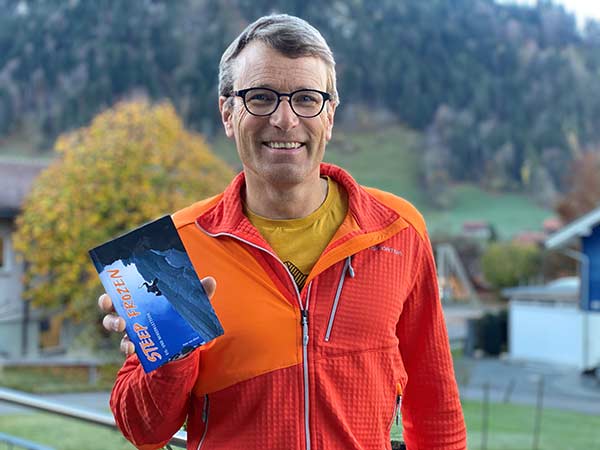
Steep Frozen: A Practical Textbook
This ice cream series only scratches the surface of this fascinating topic. For all those who want to know more about it, the beginning of November 2022 is the book Steep Frozen appeared.
This practical textbook by Peter von Känel summarizes a wealth of useful knowledge about ice climbing, mixed climbing and dry tooling in a compact form.
Sections on mental aspects and equipment complete this clearly structured work. Thanks to its compact format, the book can also be used as a useful reference book for on the go.
The book is in Filidor publishing house published and costs CHF 32.00. You can find more information, including extracts and reader feedback, at Peter von Känel's Website.
That might interest you
- Setting ice screws: how it works | Ice Climbing Pro Tips
- Ice climbing pro tips: Assess ice conditions and assess them on site
- Ondra pulverizes Ben Moon and Jerry Moffatt's test pieces
Do you like our climbing magazine? When we launched LACRUX, we decided not to introduce a payment barrier. It will stay that way, because we want to provide as many like-minded people with news from the climbing scene.
In order to be more independent of advertising revenue in the future and to provide you with even more and better content, we need your support.
Therefore: Help and support our magazine with a small contribution. Naturally you benefit multiple times. How? You will find out here.
+ + +
Credits: Cover picture Vladek Zumr


